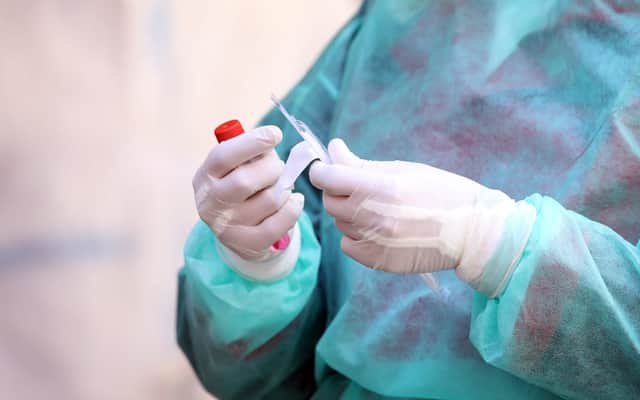Are rapid Covid tests accurate? This is what studies show as mass testing is rolled out to more parts of England


Concerns have been raised over the accuracy of rapid coronavirus tests ahead of them being rolled out to another 17 local council areas across England.
Some evidence suggests that the rapid tests are not capable of picking up a significant number of infections. Here’s what you need to know.
What are rapid coronavirus tests?
Advertisement
Hide AdAdvertisement
Hide AdRapid coronavirus tests - called Lateral Flow Tests - are tests that can deliver a positive or negative result within 30 minutes of the person being tested.
The test works in the same way as the slower PCR tests - where a sample is taken via swab from the nose or throat.
Rather than being sent off to a lab like the PCR test, the swab is given a shake into fluid unil any viral particles come off. The fluid is then dropped onto a plastic stick which, like a pregnancy test, will show a marking if the person is positive.
The tests have been promised to schools in England when students return after the Christmas break.
Advertisement
Hide AdAdvertisement
Hide AdThey were used during a mass-testing pilot in Liverpool, where everyone living or working in the city was offered a test for free, regardless of whether they had symptoms or not.
The quick-turnaround tests will also be rolled out to more council areas in addition to the 106 already signed up.
The 17 additional areas that are rolling out community testing are:
Tier 3: Boston, Calderdale, County Durham, Coventry, Gateshead, Hartlepool, Lincoln, Newcastle, North Tyneside, Northumberland, Redcar and Cleveland, South Gloucestershire, South Tyneside, Sunderland and Walsall.
Tier 2: Bristol and North Somerset.
How accurate are the tests?
Advertisement
Hide AdAdvertisement
Hide AdThere has been some debate over the accuracy of the rapid tests, particularly with regards to their ability to pick up asymptomatic cases of coronavirus.
The British Medical Journal (BMJ) reports that James Bethell, one of England’s health ministers, said in a recent letter (seen by the BMJ) that mass testing of people without symptoms is “not an accurate way of screening the general population”.
His comments come after data from the Liverpool testing programme revealed that rapid tests detected just 48.89 per cent of coronavirus infections in people with no symptoms when compared to a PCR test.
The Health Secretary Matt Hancock denied that the detection rate in asymptomatic people ws so low after SNP MP Philippa Whitford cited this figure of 48.89 per cent in the House of Commons.
Advertisement
Hide AdAdvertisement
Hide AdHe claimed that “the lateral flow tests find around 70 per cent of those who are infectious”.
The research Mr Hancock referred to comes from the government’s Porton Down lab and the University of Oxford from November 8, when an “overall sensitivity of 76.8 per cent” was found in the rapid tests, with over 95 per cent of people with “high viral loads” detected as being infected by the tests.
Why do the rates differ?
The Liverpool testing scheme and the Porton Down/Oxford research were both carried out in different settings.
While the Liverpool testing scheme was carried out in a real-world setting, the Porton Down/Oxford research was conducted with several different variables.
Advertisement
Hide AdAdvertisement
Hide AdTheir research found that 79 per cent of positive cases were picked up when tests were carried out by lab scientists, while 73 per cent were detected when administered by trained healthcare workers.
When carried out by “self-trained members of the public”, their research found that just 58 per cent of cases were picked up.
What does this mean for testing in schools?
Although schools are yet to receive details about how testing will work, an NHS handbook obtained by Schools Week says that school staff, volunteers, school and/or retired nurses and agency workers will be expected to carry out or supervise tests.
This suggests that many of those carrying out tests will be relative beginners, meaning results are likely to be less accurate.
The chances of finding a positive case, however, will increase with a second test, which pupils will be given three days after the first.